
Synchrotron radiation is the electromagnetic radiation emitted when relativistic charged particles are subject to an acceleration perpendicular to their velocity. It is produced artificially in some types of particle accelerators, or naturally by fast electrons moving through magnetic fields. The radiation produced in this way has a characteristic polarization and the frequencies generated can range over a large portion of the electromagnetic spectrum.

Cromer is a coastal town and civil parish on the north coast of the English county of Norfolk. It is 23 miles north of Norwich, 116 miles north-northeast of London and four miles east of Sheringham on the North Sea coastline. The local government authorities are North Norfolk District Council, whose headquarters is on Holt Road in the town, and Norfolk County Council, based in Norwich. The civil parish has an area of 4.66 km2 and at the 2011 census had a population of 7,683.

Hermit crabs are anomuran decapod crustaceans of the superfamily Paguroidea that have adapted to occupy empty scavenged mollusc shells to protect their fragile exoskeletons. There are over 800 species of hermit crab, most of which possess an asymmetric abdomen concealed by a snug-fitting shell. Hermit crabs' soft (non-calcified) abdominal exoskeleton means they must occupy shelter produced by other organisms or risk being defenseless.
Mud crab may refer to any crab that lives in or near mud, such as:
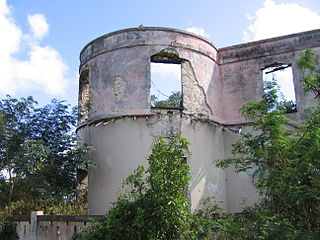
The parish of Saint Lucy is the northernmost area in the country of Barbados. Saint Lucy is the only parish of Barbados out of the eleven to be named after a female patron saint, Saint Lucy of Syracuse. Saint Lucy's shape also resembles a peninsula, surrounded on three sides by the Atlantic Ocean to the north, east and west. The Harrison Point Lighthouse is located in Harrisons, Saint Lucy between Great Head and Norse's Bay, also in Saint Lucy. To the south lies the neighbouring Parish of Saint Peter.

The Boston crab is a professional wrestling hold that typically starts with one wrestler lying in a supine position on the mat, with the other wrestler standing and facing them. It is a type of spinal lock where the wrestler hooks each of the opponent’s legs in one of their arms and then turns the opponent face-down, stepping over them in the process. The final position has the wrestler in a semi-sitting position and facing away from the opponent, with the opponent’s back and legs bent back toward their head. The original name for the maneuver was the Backbreaker, before that term became known for its current usage. In modern wrestling, the Boston crab is not treated as a lethal submission maneuver, even though it was considered a match-ending hold in the past.

"South Park Is Gay!" is the eighth episode of the seventh season and the 104th overall episode of the American animated sitcom South Park. It originally aired on Comedy Central in the United States on October 22, 2003. In the episode, Kyle struggles to understand a new metrosexual fad that has sprung around the men and boys of South Park and is the only one who does not want to conform to it. The episode features a parody of the TV show, Queer Eye for the Straight Guy.

A barrier transfer machine, also known as zipper machine or road zipper, is a type of heavy vehicle that is used to transfer concrete lane dividers, such as jersey barriers and Auckland harbour bridge barrier which are used to relieve traffic congestion during rush hours. Many other cities use them temporarily during construction work. The lanes created by the machine are sometimes referred to as "zipper lanes".
In special relativity, the rest frame of a particle is the frame of reference in which the particle is at rest.

In aviation, a crosswind landing is a landing maneuver in which a significant component of the prevailing wind is perpendicular to the runway center line.
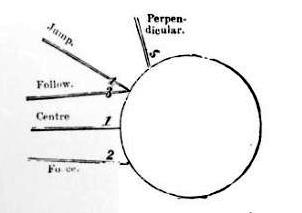
Cue sports techniques are a vital important aspect of game play in the various cue sports such as carom billiards, pool, snooker and other games. Such techniques are used on each shot in an attempt to achieve an immediate aim such as scoring or playing a safety, while at the same time exercising control over the positioning of the cue ball and often the object balls for the next shot or inning.

A billiard-ball computer, a type of conservative logic circuit, is an idealized model of a reversible mechanical computer based on Newtonian dynamics, proposed in 1982 by Edward Fredkin and Tommaso Toffoli. Instead of using electronic signals like a conventional computer, it relies on the motion of spherical billiard balls in a friction-free environment made of buffers against which the balls bounce perfectly. It was devised to investigate the relation between computation and reversible processes in physics.

HEXBUG is a brand of infrared and automaton toys developed and distributed by Innovation First International. HEXBUG uses many elements used in BEAM robotics. First piloted in the US through RadioShack, HEXBUG is now sold in most major retail stores. The original Hexbugs are based on six-legged arthropods but now come in several different varieties. The name "HEXBUG" relates to the six-sided packaging it is sold in, rather than to its number of legs.

Crab Island is a roughly 40-acre (0.16 km2) limestone island situated in Lake Champlain just outside Plattsburgh Bay in the town of Plattsburgh in Clinton County in upstate New York. During the War of 1812, the island was utilized as a military field hospital for convalescent soldiers as well as both British and American casualties of the Battle of Plattsburgh. The island is the site of a mass grave believed to contain the remains of roughly 150 of those casualties.

The coconut crab is a species of terrestrial hermit crab, also known as the robber crab or palm thief. It is the largest terrestrial arthropod in the world, with a weight of up to 4.1 kg (9 lb). It can grow to up to 1 m in width from the tip of one leg to the tip of another. It is found on islands across the Indian Ocean, and parts of the Pacific Ocean as far east as the Gambier Islands, Pitcairn Islands and Caroline Island, similar to the distribution of the coconut palm; it has been extirpated from most areas with a significant human population, including mainland Australia and Madagascar. Coconut crabs also live off the coast of Africa near Zanzibar.
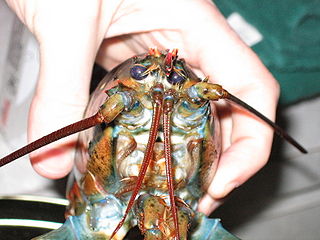
Pain in crustaceans is a scientific debate which questions whether they experience pain or not. Pain is a complex mental state, with a distinct perceptual quality but also associated with suffering, which is an emotional state. Because of this complexity, the presence of pain in an animal, or another human for that matter, cannot be determined unambiguously using observational methods, but the conclusion that animals experience pain is often inferred on the basis of likely presence of phenomenal consciousness which is deduced from comparative brain physiology as well as physical and behavioural reactions.
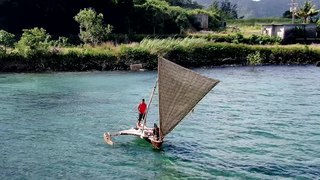
Kaep is a traditional type of double-ended Proa sailboat native to Palau. Some of the essential design elements have also been adopted as a modern smaller multihull prototype variant.
Crab bee hoon is a Singaporean rice vermicelli dish with whole mud crab served in a claypot and spiced milky broth. Bee Hoon or rice noodle has the ability to soak up the stock from any dish and that's the reason it is so popular among the locals. There's also a dry version, where thinner rice noodles are tossed in a hot wok before stewing in a broth until every strand is permeated with similar sweetness.
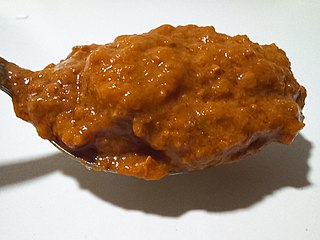
Taba ng talangka, also known simply as aligi, is a Filipino seafood paste derived from the roe and reddish or orange tomalley of river swimming crabs or Asian shore crabs (talangka).















